Poultry farming has significantly expanded in India, catering to the growing demand for chicken and eggs. As the sector thrives, many wonder, “How do you calculate profit on a poultry farm in India?” or “Poultry farm income per month in India and poultry farm income per year in India?” This article aims to shed light on poultry farm profit calculation, addressing concerns like “Is income from poultry farming taxable?” and the average poultry farm income.
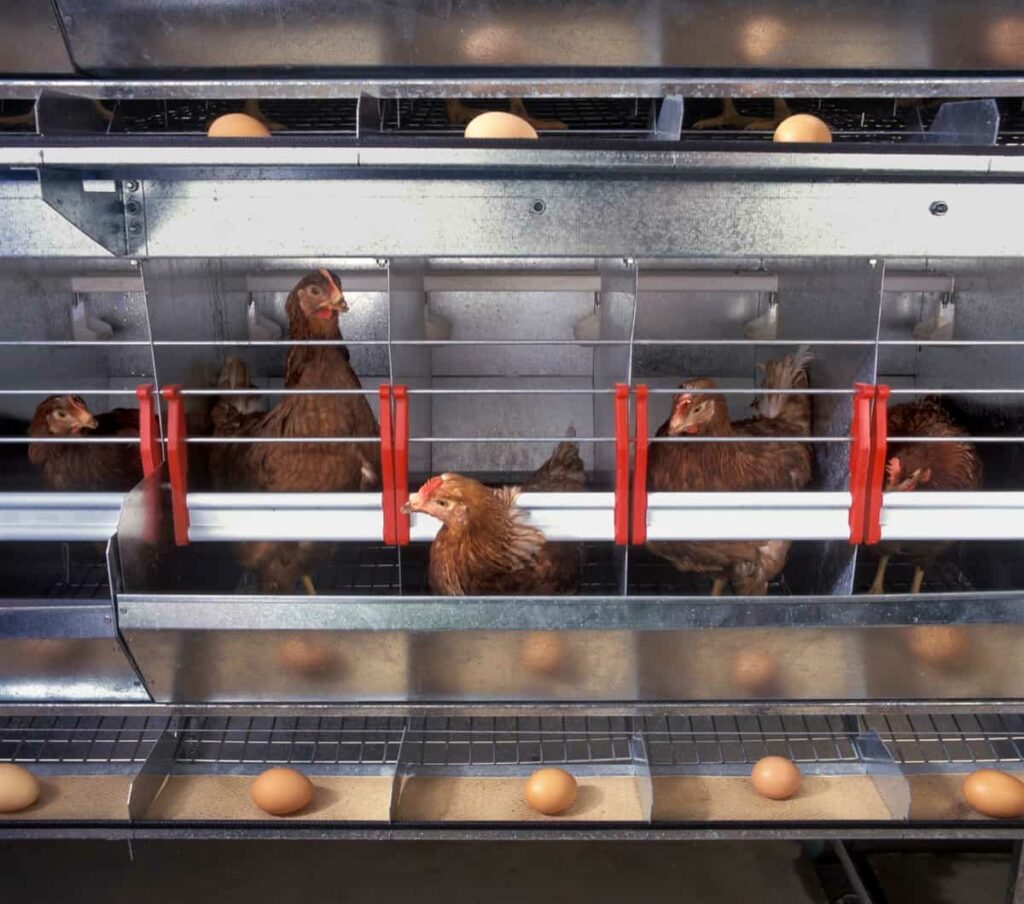
Factors Affecting Poultry Farm Income in India: Market Demand and Supply
The income from a poultry farm hinges on various factors. Predominantly, market demand and supply dynamics influence poultry farm earnings. For instance, festivals and cultural occasions can impact broiler poultry income per month in India due to increased meat consumption. On the other hand, prices may fluctuate based on feed costs, disease outbreaks, or government policies. Recognizing these factors when considering poultry farm monthly income and calculating chicken profit is essential.
Revenue Streams in Poultry Farming in India: Eggs, Meat, and By-products
In India, the primary revenue streams for poultry farmers include eggs, meat, and by-products like manure. The broiler poultry income per month in India primarily focuses on meat, while the layer poultry income per month in India is based on egg production. With this diversity, the poultry farm revenue per month can significantly vary. For example, a spike in meat demand will benefit broiler farms more than layer farms, and vice versa.
Calculating Monthly Income from Egg Production in India: Number of Hens and Average Egg Yield
Layer poultry income per month in India is typically calculated by considering the number of hens and the average egg yield. Suppose a farm has 1,000 hens, each laying 25 eggs a month. If one egg sells for ₹5, the monthly income would be ₹1,25,000. One must subtract feed costs, labor charges, and other overheads from this to get the net profit. Using similar logic, one can ascertain the poultry farm ROI by understanding the initial investment and the monthly profit after costs.
In case you missed it: Poultry Farm Design: Low-cost Layout Plans and Required Poultry Farming Equipment
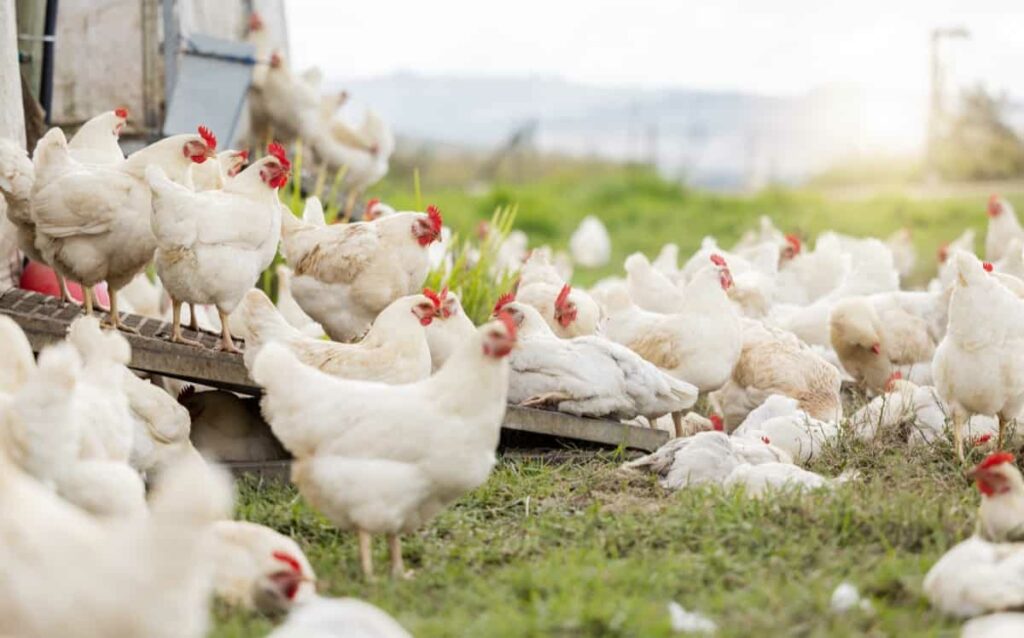
In India, many consider whether poultry farm income is taxable. Generally, agricultural income, which includes poultry farming, is exempt from income tax. Yet, there are specific conditions to meet for this exemption. One must consult the “income tax on poultry farm income” guidelines for clarity.
Estimating Monthly Income from Meat Production in India: Broiler Chickens and Market Prices
In the poultry farming industry, meat production holds significant promise for profit, especially with broiler chickens. The monthly broiler income depends on the number of chickens raised and the prevailing market prices. For instance, if a farmer raises 1,000 broiler chickens and each fetches a market price of ₹200, the total revenue would be ₹2,00,000.
However, calculating the net profit requires subtracting the feed, vaccines, labor, and other operational expenses. While the broiler poultry income per month in India has its peaks and troughs, keeping a tab on market prices, understanding the cost of production, and being aware of consumer trends can help optimize profits.
Additional Income Sources in India: Selling Feathers, Manure, and Live Birds
While eggs and meat are the primary revenue streams, poultry farms benefit from several secondary income sources. Selling feathers, often used in various industries like fashion and home décor, can provide an added revenue stream. Additionally, poultry manure is a sought-after organic fertilizer in agriculture, fetching a good price in local markets.
Furthermore, selling live birds, especially during festive seasons or to specialty markets, can augment the monthly poultry farm income in India. Awareness of these additional sources and tapping into them can ensure steady revenue even during lean periods.
Seasonal Variations in Poultry Farm Income in India: Impact on Monthly Earnings
Poultry farming is not immune to seasonal variations, which can notably impact monthly earnings. Climate changes, festive seasons, or local events can influence consumer demand. For example, during certain festivals, there might be a rise in demand for meat, thus increasing the monthly broiler poultry income in India.
Conversely, summers might see reduced egg production, affecting the layer poultry income per month in India. Understanding these variations and planning accordingly is essential for maintaining a consistent poultry farm income per year in India. Farmers can strategize their production, storage, and sales by grasping these seasonal trends to optimize their monthly and annual profits.
Managing Costs and Expenses in Indian Poultry Farming: Feed, Labor, and Infrastructure
Effective management of costs and expenses is paramount in ensuring the profitability of poultry farming in India. Feed typically accounts for about 60-70% of the total production cost, making it the most substantial expense for farmers. The choice between locally produced feed versus commercial feed can significantly impact costs, with the former often being more economical but potentially less nutritious.
Labor expenses follow next, which depend on the scale of the farm. Larger farms necessitate more hands, increasing wages, while smaller operations might rely more on family labor, thus controlling costs. Infrastructure, including housing for birds, feeding systems, and ventilation, is a considerable initial investment.
In case you missed it: Chicken Farming in India: Poultry Farming Cost, License, and Requirements to Start in India
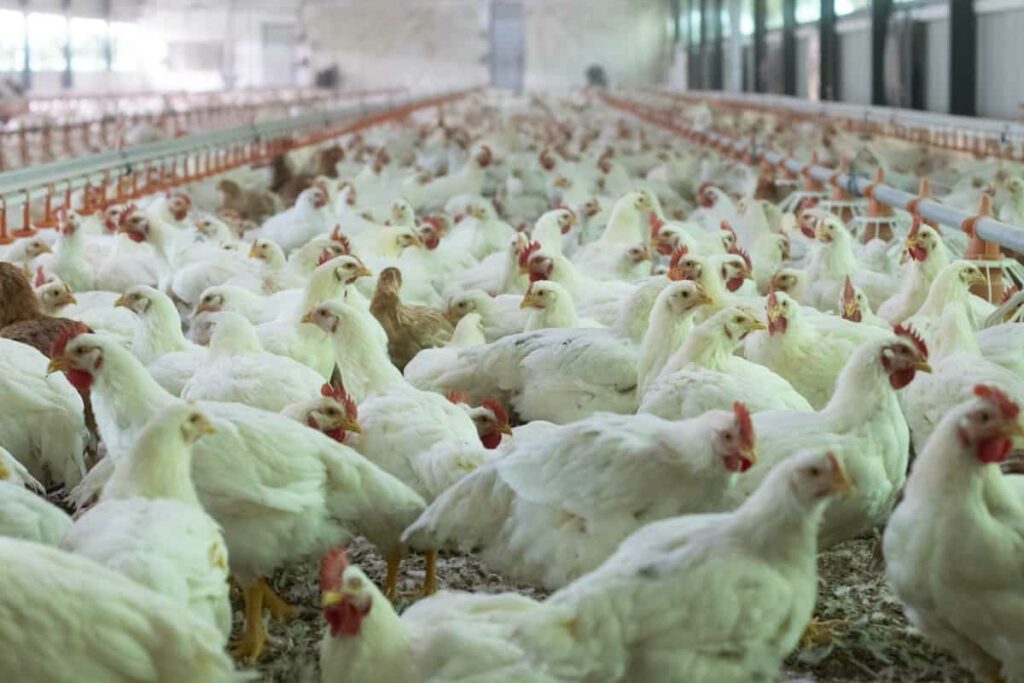
Proper planning and judicious spending on infrastructure can ensure that the farm operates efficiently and is scalable. Moreover, regular maintenance can prevent unforeseen expenses and enhance the longevity of the equipment. In essence, diligent management of these core expenses can substantially influence the poultry farm income per month in India and the poultry farm income per year in India.
Taxation on Poultry Farm Earnings in India: Understanding the Basics
One of the primary concerns for poultry farmers in India is understanding the taxation landscape. Generally, the income earned from poultry farming is considered agricultural income, which is tax-exempt. However, this exemption is subject to specific conditions, and not every poultry farm income can be classified under agricultural income. For instance, farms integrated with other businesses or those engaging in activities outside the scope of traditional farming might fall under a different taxation bracket.
Moreover, understanding if and when GST applies, especially when selling by-products or engaging in interstate trade, becomes vital. The key is to stay updated with the latest tax regulations and seek advice from tax professionals to ensure compliance and benefit from the available exemptions.
Income Tax Calculation for Poultry Farms in India: Reporting Profit and Loss
To accurately calculate the income tax for poultry farms in India, it’s crucial to meticulously report both profits and losses. The first step is maintaining detailed financial records, capturing all revenue streams, including egg sales, meat sales, and income from by-products. Deductible expenses, such as feed, veterinary, and infrastructure maintenance, should be recorded systematically.
The net profit, calculated by subtracting the total expenses from the total income, becomes the base for income tax calculation. If the income is deemed taxable, the tax is levied on this net profit. It’s also crucial to remember that any losses incurred can be carried forward and set off against future profits, offering a cushion in subsequent years. Therefore, a comprehensive understanding of profit and loss reporting is essential for precise income tax calculations.
Deductible Expenses for Poultry Farms in India: Feed, Veterinary Services, and Equipment
Reducing taxable income is a legitimate way for poultry farmers to optimize their earnings. In India, several expenses incurred in the process of poultry farming are deductible. As previously mentioned, feed costs, often the most significant expense, can be fully deducted from the gross income. Veterinary services, vital for the health and well-being of the birds, including vaccines, treatments, and regular health check-ups, are also deductible.
Equipment depreciation is another area where deductions can be availed. Equipment used in poultry farming, such as feeders, drinkers, and heating systems, depreciates over time. The depreciation amount, calculated based on the equipment’s life and initial cost, can be deducted from the total income, reducing the taxable amount. Understanding these deductible expenses and ensuring that they are correctly recorded can significantly reduce the tax burden and increase India’s net poultry farm income per year.
Tax Planning Strategies for Poultry Farmers of India: Maximizing Deductions and Credits
Tax planning is crucial for poultry farmers in India to optimize their financial outcomes and legally minimize tax liabilities. The primary strategy is to maximize deductions, ensuring that every rupee spent on the farm is accounted for and deducted from gross income where applicable. This includes not just the obvious costs like feed and labor but also interest on loans taken for poultry farming, insurance premiums for coverage against diseases or natural calamities, and rental expenses if the land is leased.
In case you missed it: Poultry Farming in Thailand: Breeds, Techniques, and License to Start
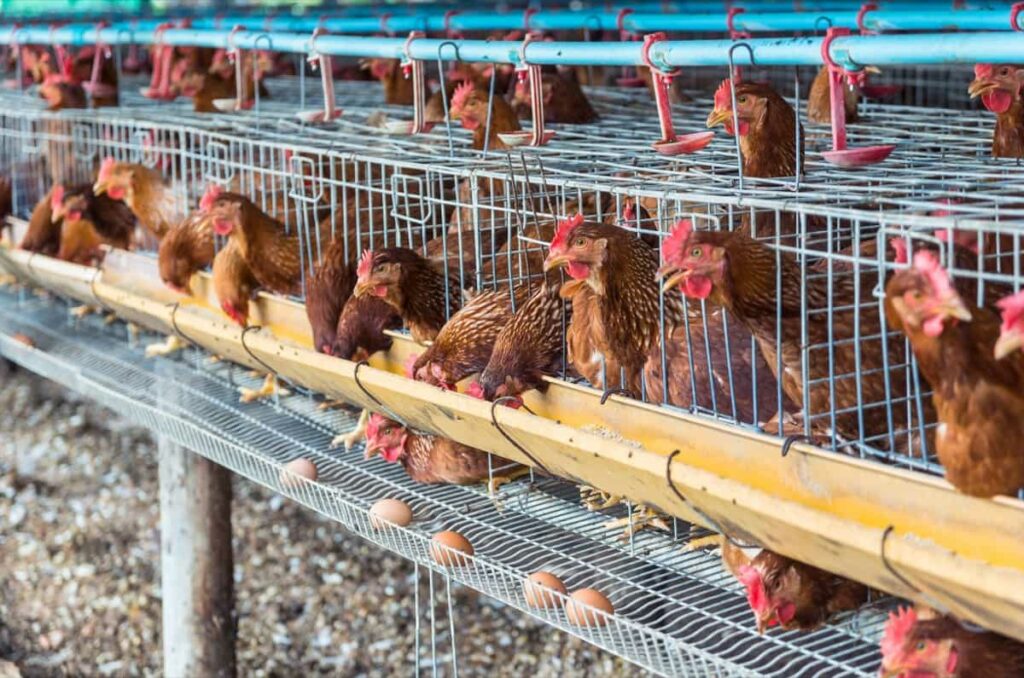
Moreover, understanding and claiming credits available to farmers can be a game-changer. Various state and central government schemes offer subsidies and credits to promote sustainable farming practices, using renewable energy in farms, or introducing advanced technologies in poultry farming. Another strategy is income splitting, where the farm income is distributed among family members, potentially pushing each into a lower tax bracket.
Year-end purchases can also be a useful tactic. If a farmer foresees a higher income and consequent higher tax, making year-end purchases for the farm can offset the profit. Lastly, farmers must stay updated with changing tax laws and policies. Engaging a tax consultant, especially one familiar with agricultural income, can guide in leveraging the best strategies to minimize tax and enhance the poultry farm income per year in India.
Record-keeping and Documentation for Poultry Farm Income Tax
Maintaining meticulous records and documentation is indispensable for poultry farmers in India, especially concerning income tax implications. At its core, record-keeping helps track income and expenses, thus determining the profitability and financial health of the farm. It assists in understanding the monthly poultry farm income in India and projecting future financial needs. For tax purposes, detailed documentation is evidence for all claimed deductions and credits.
This means keeping invoices for every purchase, feed, equipment, or veterinary service. Receipts for selling eggs, meat, and by-products should be stored systematically. Moreover, any government subsidies or grants received should be documented to prevent potential over-taxation. Aside from tax implications, maintaining proper records is essential for availing loans, as financial institutions often require detailed profit and loss statements.
Additionally, a comprehensive paper trail can be invaluable in disputes or clarifications, whether with suppliers, buyers, or tax authorities. Implementing a computerized accounting system or even simple spreadsheet tools can streamline this process, ensuring that all financial transactions are captured accurately and can be retrieved easily when needed.
Poultry Farm Income Per Month in India: State-wise Profit Calculation
| State | No. of Birds | Layer Income (₹) | Broiler Income (₹) | Layer Profit (₹) | Broiler Profit (₹) |
| Poultry Farm Income Per Month in Andhra Pradesh | 1000 | 35,000 | 28,000 | 30,000 | 24,000 |
| Poultry Farm Income Per Month in Arunachal Pradesh | 1000 | 25,000 | 20,000 | 22,000 | 18,000 |
| Poultry Farm Income Per Month in Assam | 1000 | 28,000 | 23,000 | 24,500 | 20,500 |
| Poultry Farm Income Per Month in Bihar | 1000 | 30,000 | 26,000 | 26,500 | 23,500 |
| Poultry Farm Income Per Month in Chhattisgarh | 1000 | 31,500 | 27,000 | 28,000 | 24,000 |
| Poultry Farm Income Per Month in Goa | 1000 | 30,000 | 25,000 | 26,500 | 22,500 |
| Poultry Farm Income Per Month in Gujarat | 1000 | 35,000 | 30,000 | 31,000 | 27,000 |
| Poultry Farm Income Per Month in Haryana | 1000 | 36,000 | 30,000 | 32,000 | 27,500 |
| Poultry Farm Income Per Month in Himachal Pradesh | 1000 | 28,000 | 24,000 | 25,000 | 21,500 |
| Poultry Farm Income Per Month in Jharkhand | 1000 | 30,000 | 25,000 | 27,000 | 22,500 |
| Poultry Farm Income Per Month in Karnataka | 1000 | 34,000 | 29,000 | 30,000 | 26,000 |
| Poultry Farm Income Per Month in Kerala | 1000 | 30,000 | 25,000 | 27,000 | 22,500 |
| Poultry Farm Income Per Month in Madhya Pradesh | 1000 | 32,000 | 27,000 | 28,500 | 24,500 |
| Poultry Farm Income Per Month in Maharashtra | 1000 | 37,000 | 31,000 | 33,000 | 28,000 |
| Poultry Farm Income Per Month in Manipur | 1000 | 27,000 | 22,000 | 24,000 | 20,000 |
| Poultry Farm Income Per Month in Meghalaya | 1000 | 26,000 | 21,000 | 23,500 | 19,500 |
| Poultry Farm Income Per Month in Mizoram | 1000 | 25,000 | 20,000 | 22,500 | 18,500 |
| Poultry Farm Income Per Month in Nagaland | 1000 | 26,000 | 21,000 | 23,500 | 19,500 |
| Poultry Farm Income Per Month in Odisha | 1000 | 31,000 | 26,000 | 28,000 | 23,500 |
| Poultry Farm Income Per Month in Punjab | 1000 | 35,000 | 30,000 | 31,500 | 27,500 |
| Poultry Farm Income Per Month in Rajasthan | 1000 | 33,000 | 28,000 | 29,500 | 25,500 |
| Poultry Farm Income Per Month in Sikkim | 1000 | 26,000 | 21,000 | 23,500 | 19,500 |
| Poultry Farm Income Per Month in Tamil Nadu | 1000 | 36,000 | 30,000 | 32,500 | 28,000 |
| Poultry Farm Income Per Month in Telangana | 1000 | 35,000 | 29,000 | 31,000 | 26,500 |
| Poultry Farm Income Per Month in Tripura | 1000 | 27,000 | 22,000 | 24,500 | 20,000 |
| Poultry Farm Income Per Month in Uttar Pradesh | 1000 | 34,000 | 28,000 | 30,500 | 26,000 |
| Poultry Farm Income Per Month in Uttarakhand | 1000 | 31,000 | 25,000 | 28,000 | 23,000 |
| Poultry Farm Income Per Month in West Bengal | 1000 | 33,000 | 28,000 | 30,000 | 25,500 |
In case you missed it: Month-Wise Poultry Farm Operations Maintenance and Management For Better Profits
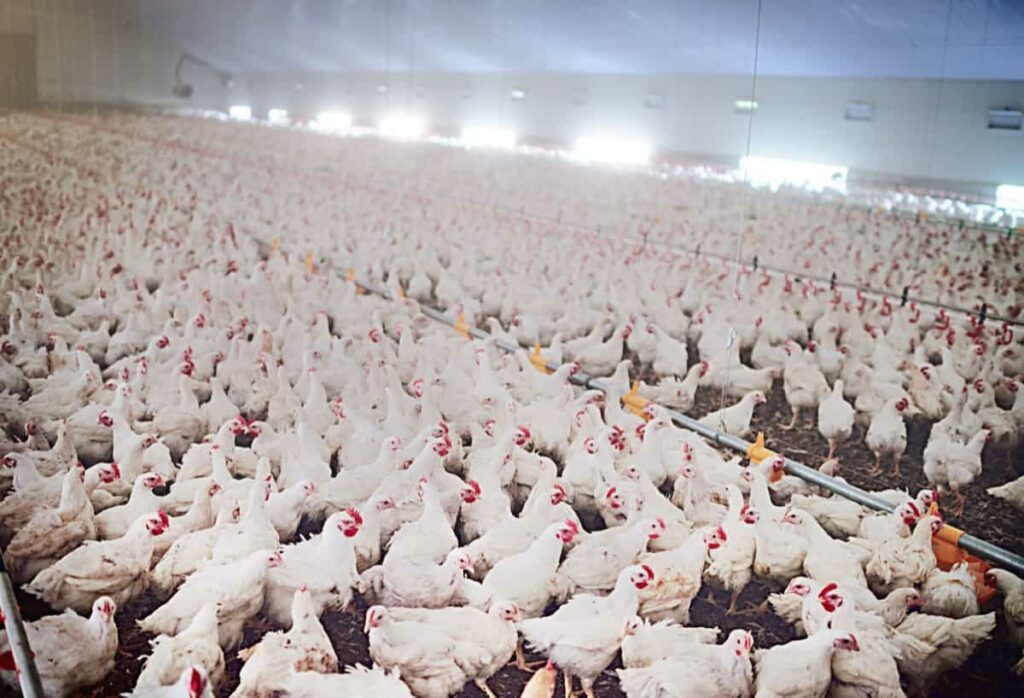
Monthly Income from Chickens and Eggs for Broiler and Layers in India
| Category | Income from Meat (₹) | Income from Eggs (₹) | Total Income (₹) | Investment (₹) | Profit (₹) |
| Broiler | 40,000 | N/A | 40,000 | 28,000 | 12,000 |
| Layer | 6,000 | 35,000 | 41,000 | 28,000 | 13,000 |
| Total | 46,000 | 35,000 | 81,000 | 56,000 | 25,000 |
Conclusion
Poultry farming in India is a testament to the country’s dynamic agricultural landscape, presenting lucrative opportunities for seasoned farmers and budding entrepreneurs. By breaking down the financial nuances of poultry farming state-by-state, we get a lens into the potential earnings that vary significantly across regions, influenced by factors like feed costs, market demand, infrastructure, and cultural preferences.
Our in-depth analysis of both broilers, primarily reared for meat and layers, known for egg production, reveals the diverse income streams associated with each. While broilers offer a steady income from meat, layers provide the dual benefit of income from eggs and meat. However, like any business venture, poultry farming also comes with its share of investments in feed, health care, or housing for the birds.
Balancing these costs against potential earnings, one can deduce an illustrative profit margin, shedding light on the financial viability of the venture. It’s important to remember that while these figures provide a foundational understanding, real-time profit margins might oscillate based on fluctuating market conditions, advancements in poultry technology, and government policies.
In case you missed it: Sustainable Poultry Farming: Benefits and How to Reduce Your Carbon Footprint with Chickens
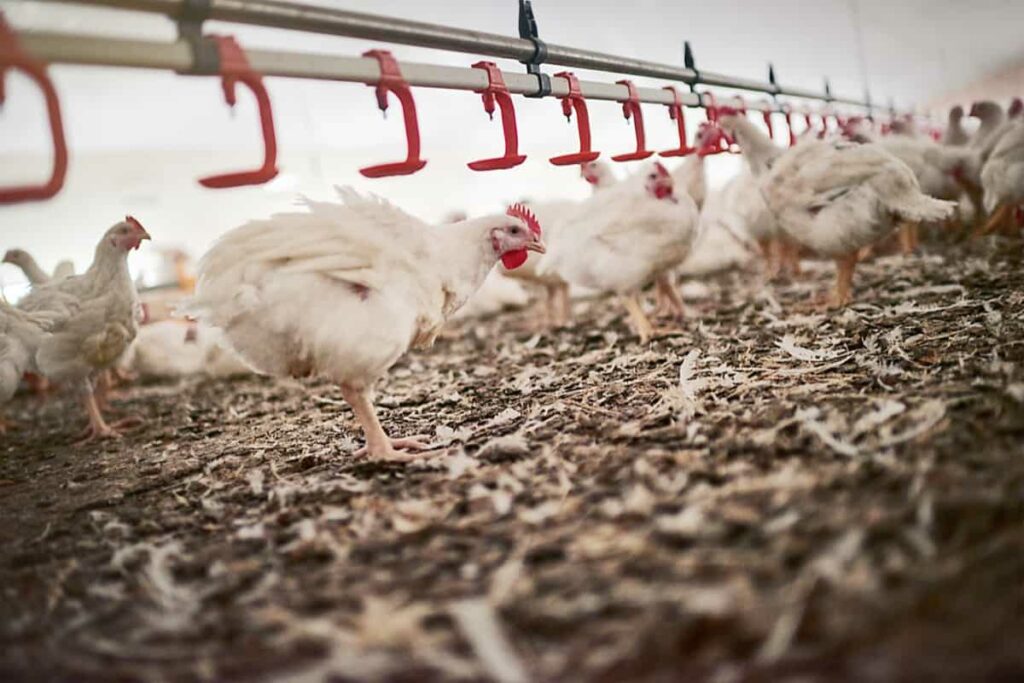
Aspiring poultry farmers should keep a close tab on these variables, engage in continuous learning, and seek expert consultation to maximize their monthly poultry farm income in India. With India’s ever-growing demand for poultry products, there’s no doubt that with the right strategies and awareness, poultry farming can hatch golden opportunities for those willing to invest time and effort.
- Broccoli Varieties: Choosing the Right Cultivars for Your Farm
- How to Raise Pigs in Your Own Backyard: A Comprehensive Guide
- Budget Friendly Sheep Shed Ideas: Cheap and Low-Cost Tips
- How Much Do Cattle Farmers Make: Revenue Streams in Cattle Farming
- Management Pests and Diseases in Your Cotton Field
- Sheep Farming Business Plan for Beginners
- Aquaponic Farming at Home: A Step-By-Step Guide
- Profitable Village Farming Business Ideas in 2024
- High-Yield Aquaculture: Fast-Growing Fish for Farming
- Effective Fish Pond Construction Techniques for Beginners
- Irrigation and Water Management in Pineapple Farming
- Blossom to Harvest: Mastering Flowering and Pollination in Papaya Farming
- Pig Fattening Essentials: From Selection to Sale for Beginners
- Raising Wagyu Cattle: A Complete Guide for Premium Beef Production
- Soil Types and Their Water Holding Capacity
- Optimizing Irrigation Schedules for Coconut Groves for Enhanced Yield
- Espresso Your Garden: Coffee Grounds for Healthier Acid-Loving Plants
- The Best Soil Mix for Snake Plants: How to Mix Your Own Snake Plant Soil
- Green Thumb Success: Expert Tips for Cultivating Greenhouse Beans All Year Round
- Bloom All Year Round: The Ultimate Guide to Indoor Hyacinth Care
- Eco-Friendly Gardening: How to Make Liquid Fertilizer from Kitchen Waste
- Ultimate Guide to Grow Anise in Pots: Explore Seed Propagation to Harvesting
- Guide to Raising Chester White Pigs: Discover Breed Facts to Growth Management
- Mastering the Elegance: The Ultimate Guide to Weeping Cherry Tree Care, Planting, and Maintenance
- Ultimate Guide to Planting Garlic in Grow Bags: Growing Strategies for Beginners
- How to Fix Spider Plant Leaf-Related Problems: Natural and Organic Remedies
- 10 Reasons Why Your Tulsi Plant is Shedding Leaves: Home Remedies and Solutions
- Optimizing Growth and Yield: The Advantages of Palm Bunch Ash Fertilizer
- Utilizing Neem Oil Extract as a Natural Pesticide for Hydrangea
- From Soil to Harvest: Various Ways in Which Farmers Can Use AI Tools
- Steps to Encourage and Induce Citrus Flowers: A Comprehensive Guide
- How to Fix Snake Plant Leaf-Related Issues: Natural and Organic Remedies
- Transform Your Garden into a Fragrant Oasis with Raat Ki Rani (Night Blooming Jasmine)
- Discover the Ideal Chicken Breeds for Philippine Farms
- How to Create a Poultry Egg Farm Business Plan for Profits
- Grow Lemon Cucumbers Like a Pro: Insider Techniques for Bountiful Yields
